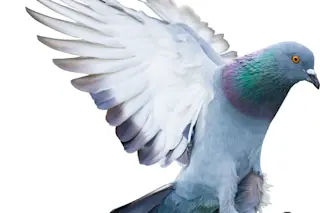Often dubbed “the rats of the sky,” pigeons have a bad — but mostly unearned — rap in modern society. Despite the stigma, these birds have some impressive skills.
Pigeons refuse to be pigeonholed. They come in an eccentric array, with around 350 recorded breeds. All are part of the family Columbidae, which also includes doves. Here are some of the most popular traits these birds are bred for.
Utility: Many pigeons are bred as a food source in the U.S. and elsewhere.
Special Skills: Some birds are selected for their abilities, such as homing pigeons, which have an incredible knack for finding home. Or there are flying tumblers and highflyers, which can roll over backward in flight — perfect for flying competitions and shows.
Display: Other pigeons are bred for superficial looks. This includes color pigeons, which have remarkable coloring and markings; pouters and croppers, which inflate their crop ...















